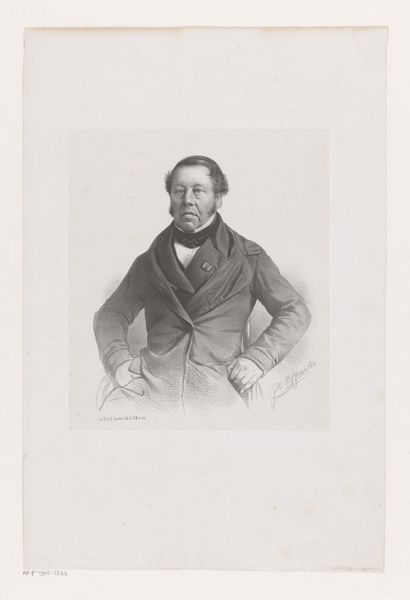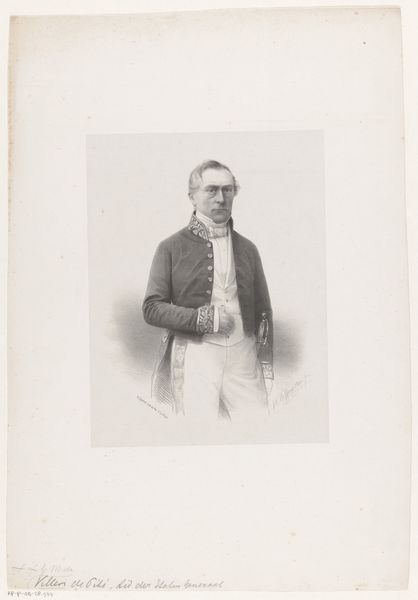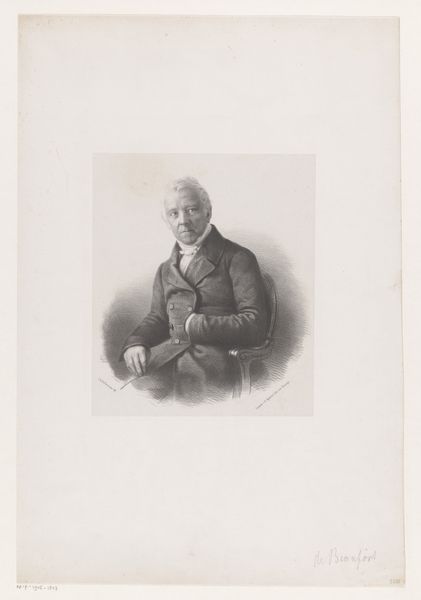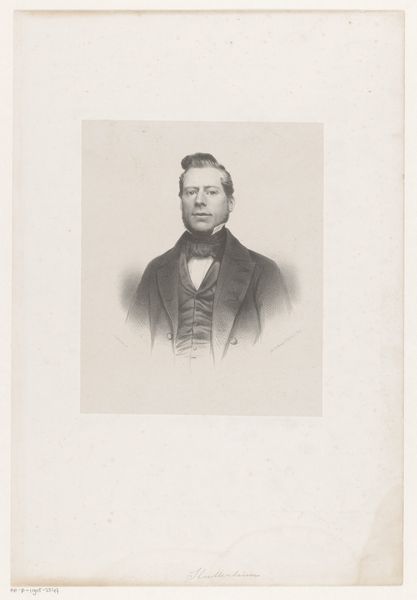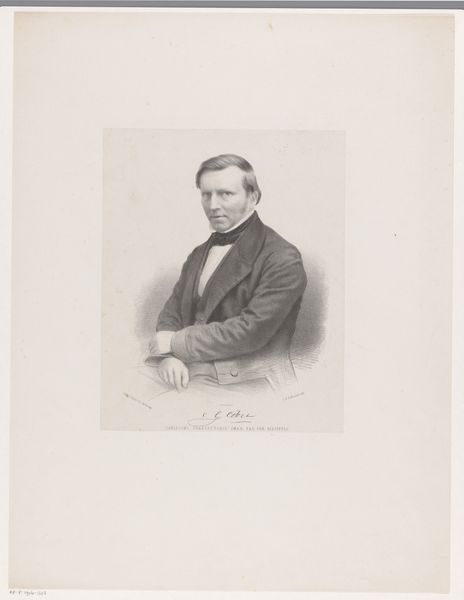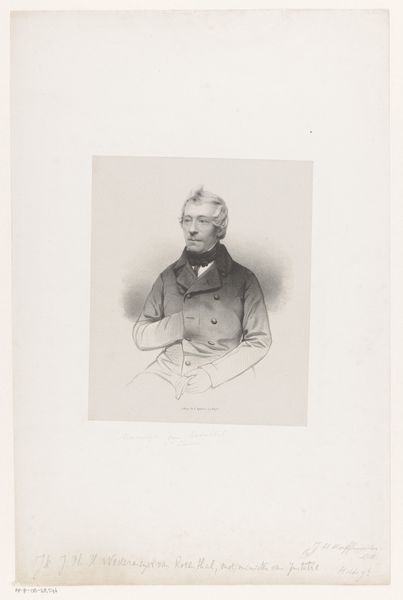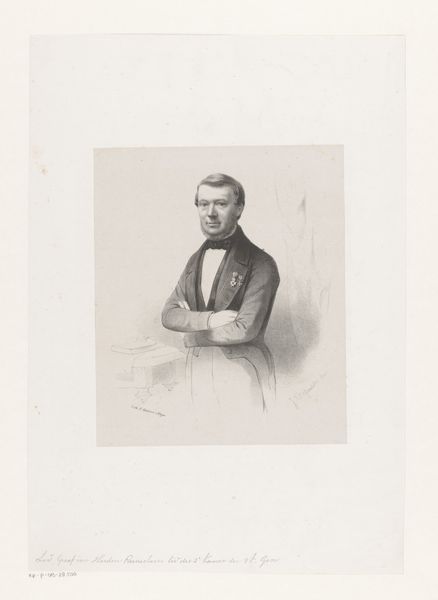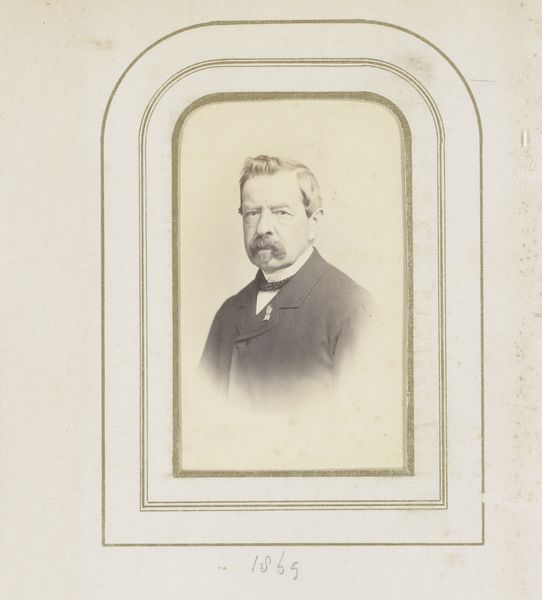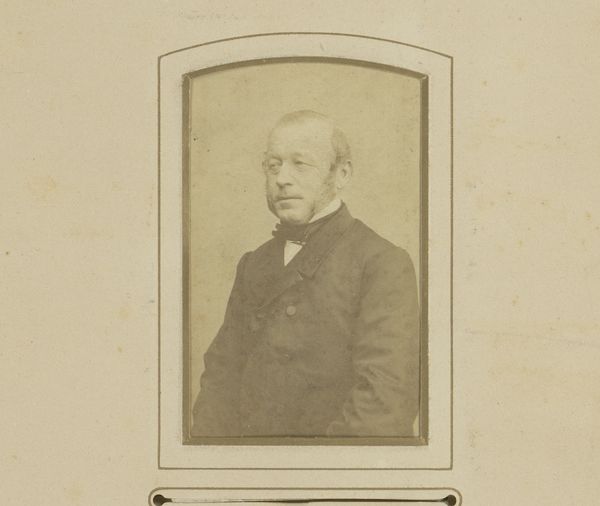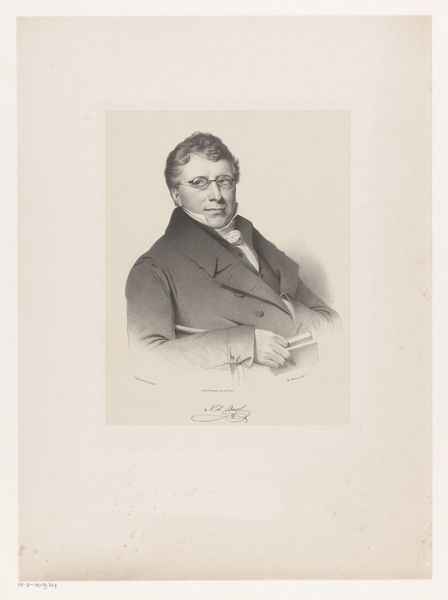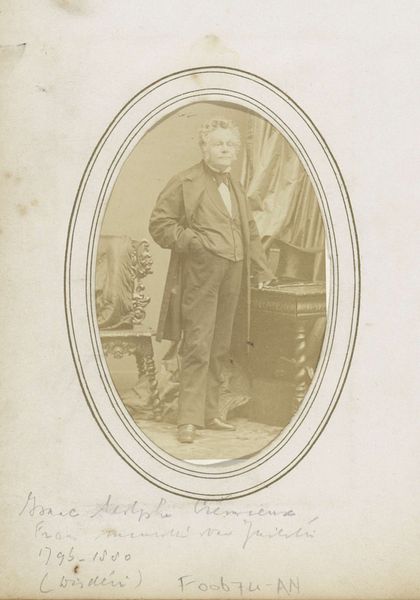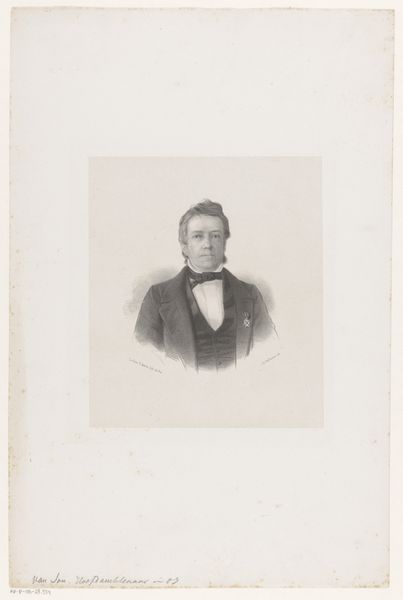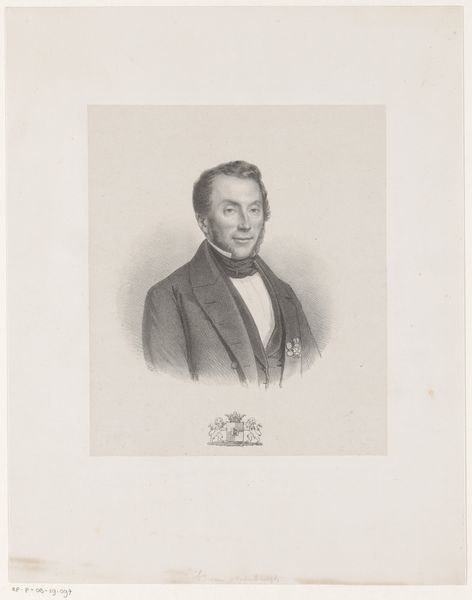
print, engraving
#
portrait
# print
#
pencil drawing
#
academic-art
#
engraving
#
realism
Dimensions: height 525 mm, width 405 mm
Copyright: Rijks Museum: Open Domain
Editor: We’re looking at a print entitled “Portret van Cornelis Jacobus van Assen” by Johan Hendrik Hoffmeister, made sometime between 1843 and 1904. It has a very formal, almost austere feel to it. What can you tell me about this portrait, especially considering the social context of the time? Curator: This portrait, rendered through engraving, speaks volumes about the sitter's societal positioning in 19th-century Europe. The formality, the clothing – it’s all carefully constructed to project authority and respectability. Academic art served a critical function in visualizing power structures and legitimizing social hierarchies. What do you notice about van Assen's gaze and posture? Editor: He looks very self-assured, almost imposing, though perhaps a bit stiff. It seems like a performance of masculinity typical for the era, now that you point it out. Curator: Precisely. Hoffmeister is not simply creating a likeness; he's participating in a larger project of constructing an image of leadership. Consider how the portrait may function as a social tool for van Assen to navigate public perception and solidify his position within a certain echelon of society. Editor: So it's less about capturing the man himself, and more about solidifying his role and power within the existing social framework. I wonder what a contemporary artist would make of this approach? Curator: A relevant question. By deconstructing such images, contemporary artists critically examine how these traditional power structures were, and still are, visually reinforced, encouraging a much needed critical dialogue on representation, power and identity. Editor: This has completely reshaped my understanding of the work – it is much more complex than a simple likeness! Curator: Exactly! Hopefully this insight will inform how we engage with images of power today.
Comments
No comments
Be the first to comment and join the conversation on the ultimate creative platform.
